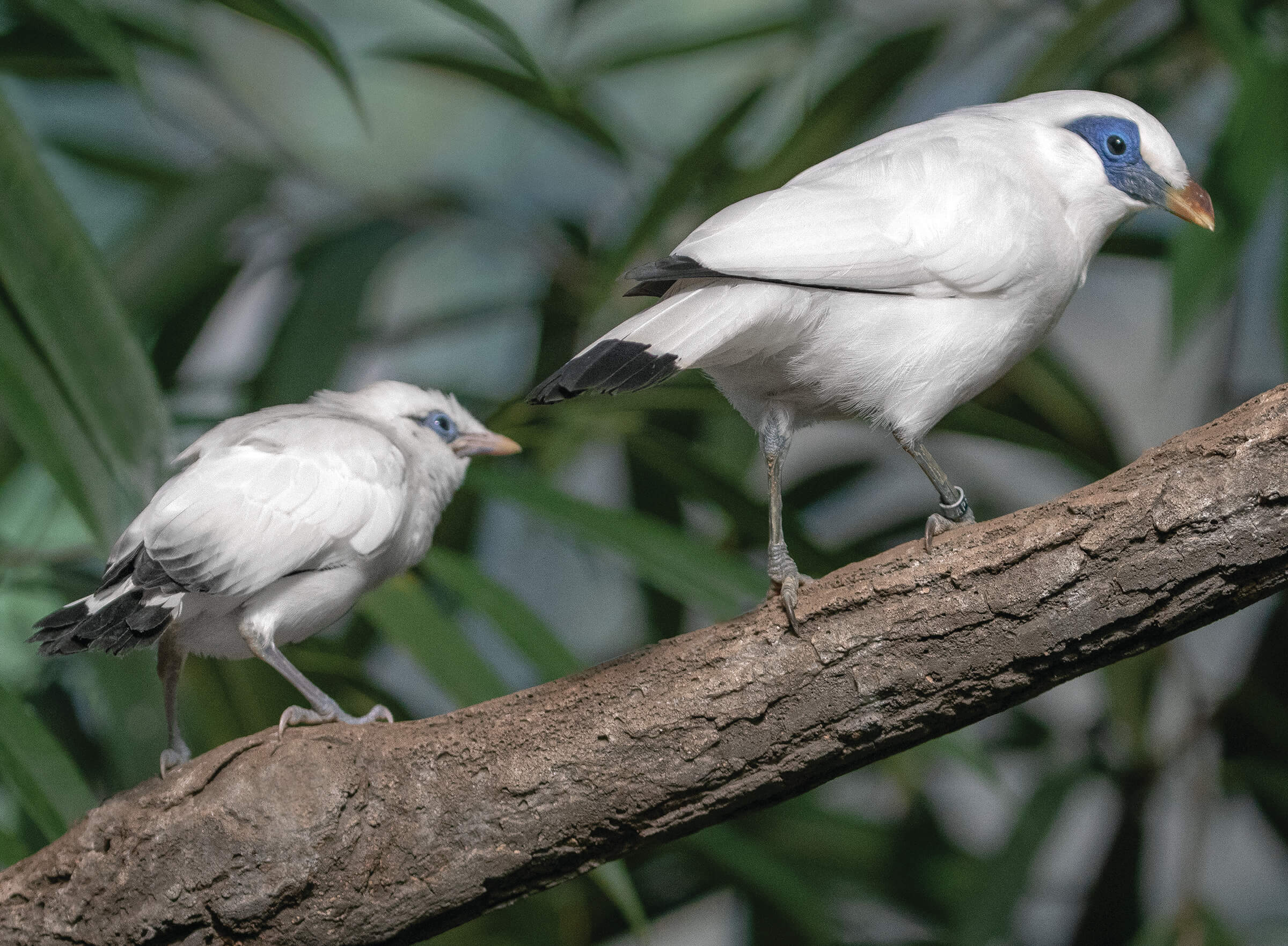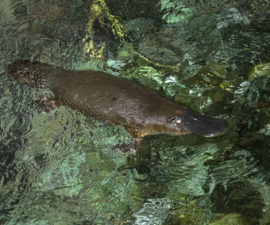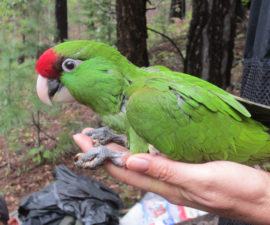Last summer, amid the “wow,” “awww,” and excited voices of visitors were some other happy sounds: the gentle pipping of hatching eggs and the sweet chirps and peeps of some special bird species. Although they’re not large like condors or fierce-looking like eagles, the new additions to our feathered families have their own particular charisma.
BY Wendy Perkins
Photography by Ken Bohn
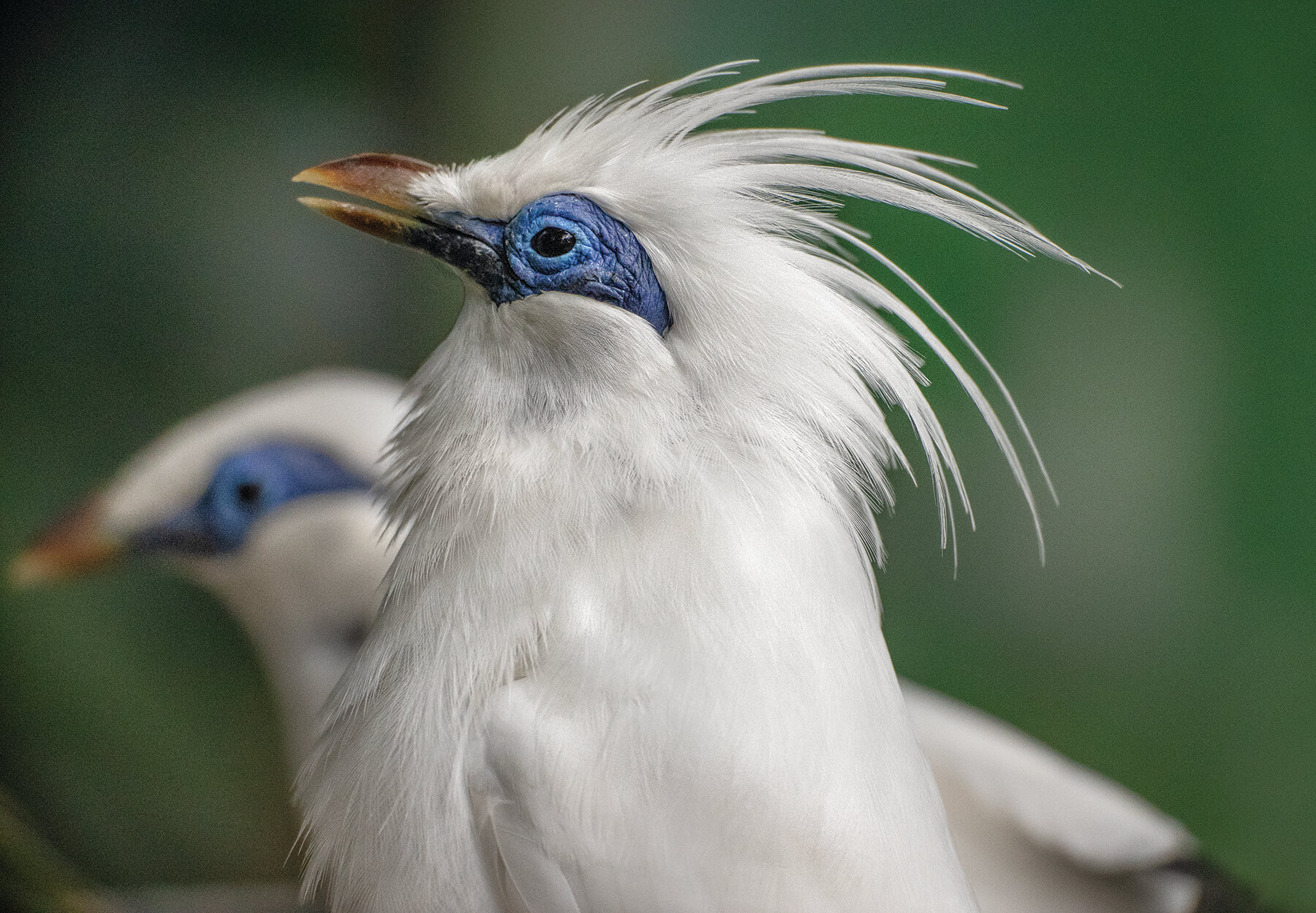
A GOOD YEAR FOR BIRDS
Western scientists first identified the Bali myna as a species in 1912.
 Number of days tinamou eggs are incubated
Number of days tinamou eggs are incubated
Just the Spot
Every hatchling is a reason to celebrate. However, the single Bali myna chick that wriggled out of its eggshell last summer was especially welcome—another feathered soldier in the march toward saving a species from extinction. A spectacular snow-white bird with a delicate, lacy crest and striking blue eye mask, the Bali myna (also known as Bali starling) Leucopsar rothschildi is the rarest bird in Indonesia’s province of Bali.
On its island home, the Bali myna has suffered the effects of deforestation, the exotic pet trade, and other pressures during the last century. In the 1980s, the preservation of this species became a priority for a number of zoos, and San Diego Zoo Global swooped in to join the effort. That was the beginning, but our commitment to the survival of this species continues. More than 170 Bali mynas have hatched at both the Safari Park and the Zoo since we began breeding them in 1962.
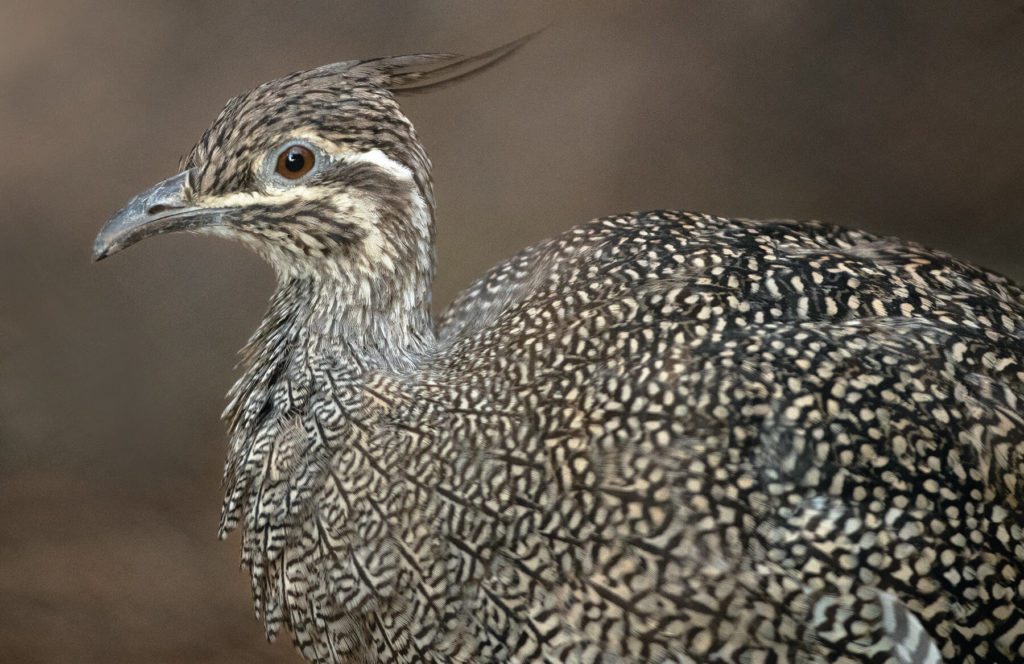
WHITES OF THEIR EYES
One characteristic feature of the elegant crested tinamous is a long whitish stripe that begins above the eye and continues down the side of the neck.
Yet, even with all our years of experience with this species, there are surprises. “The pair recommended for breeding by the Species Survival Plan (SSP) was living at our Bird Breeding Center (BBC). It’s a nice, quiet area, but not much was happening with them,” says Andrew Stehly, associate curator of birds at the Safari Park. “However, we had another pair at Hidden Jungle, and they had raised six chicks in there. So last season, we switched the locations of the two pairs. Sure enough, Hidden Jungle was just the right spot!”
Although Bali myna chicks fledge at about 21 days of age, they continue to solicit food from their parents after leaving the nest. Watch for these beautiful birds in Hidden Jungle and see if the youngster is still begging for a “beak-out.”
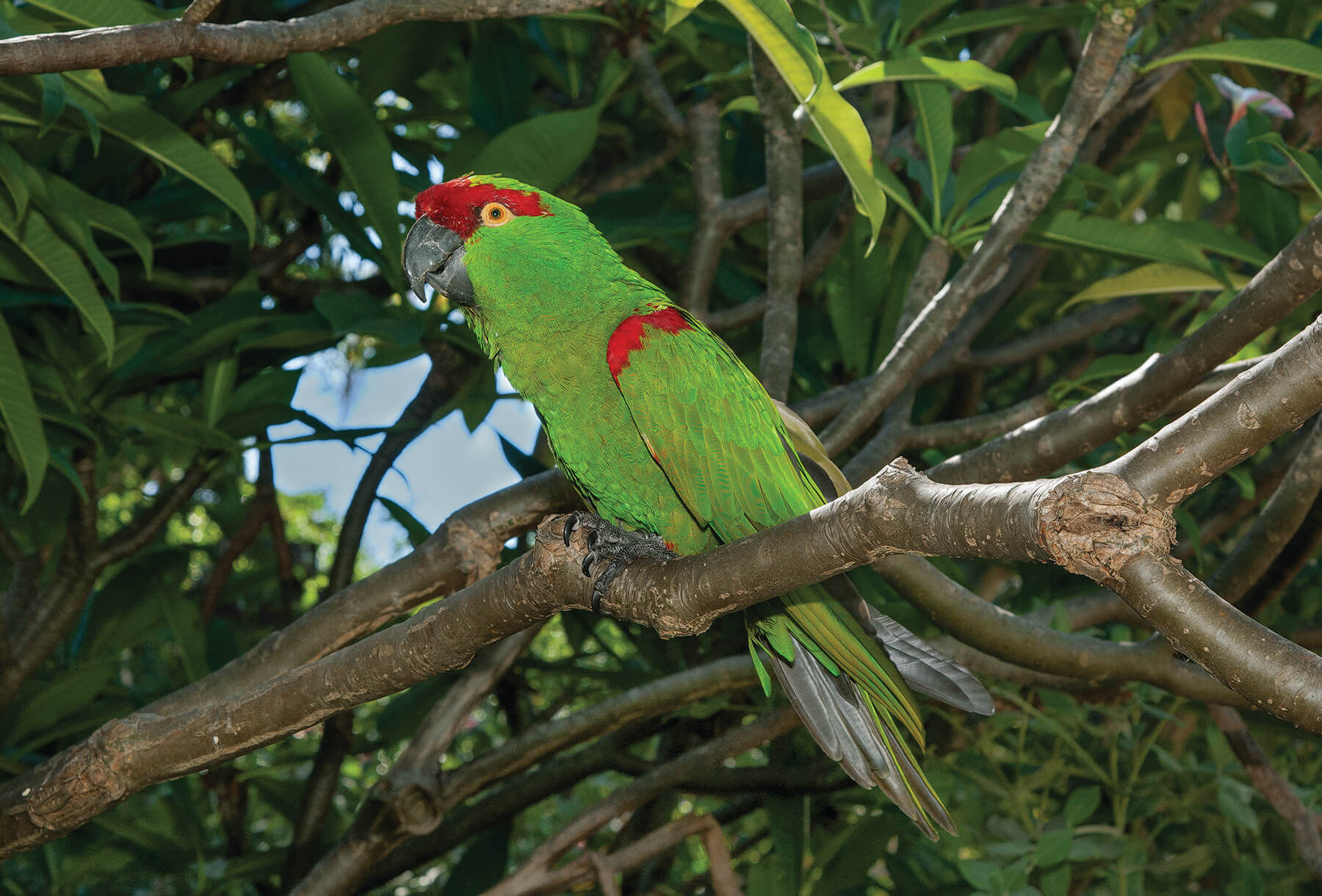
YOU CAN’T SEE ME
The thick-billed parrot’s apple-green coloring helps it blend in with the pine needles in the forest.
 Weight in grams (1 pound, 5 ounces) of an adult Nicobar pigeon
Weight in grams (1 pound, 5 ounces) of an adult Nicobar pigeon
While the “Kids” Are Away…
Thick-billed parrots Rhynchopsitta pachyrhyncha were once found from Venezuela to the southern areas of Arizona and New Mexico. Today, they’re found mostly in the Sierra Madre Occidental Mountains of northern Mexico. Estimates suggest there are just 3,000 to 6,000 left in the wild, with fewer than 1,000 breeding pairs. “We’ve been involved with this species for decades,” says Michael Mace, director of animal collections and strategy for San Diego Zoo Global, “from helping with a release attempt in the 1980s [the birds had been confiscated from smugglers] to the current in situ efforts in Mexico.”
A key part of supporting a species’ reproduction is providing just what they need to succeed. Highly intelligent and social, thick-billed parrots feed together and nest in close proximity to one another. But in some situations, proximity can be problematic.
For a number of years, the thick-billed parrot exhibit at Condor Ridge was home to a bonded pair as well as three juvenile birds. While Walkabout Australia was under construction, these birds were moved to the BBC. Nest boxes were provided, but eggs were not produced. Observant bird keepers noticed the juvenile parrots seemed to be disturbing the adults, so a new plan was hatched. Once major construction was completed, the juvenile birds were moved back to Condor Ridge. Without the high-energy antics of the juveniles, the breeding pair went from empty nesters to parents! They have doted on their single chick, which thrived and is now ready to join the other juveniles in all their parrot games.
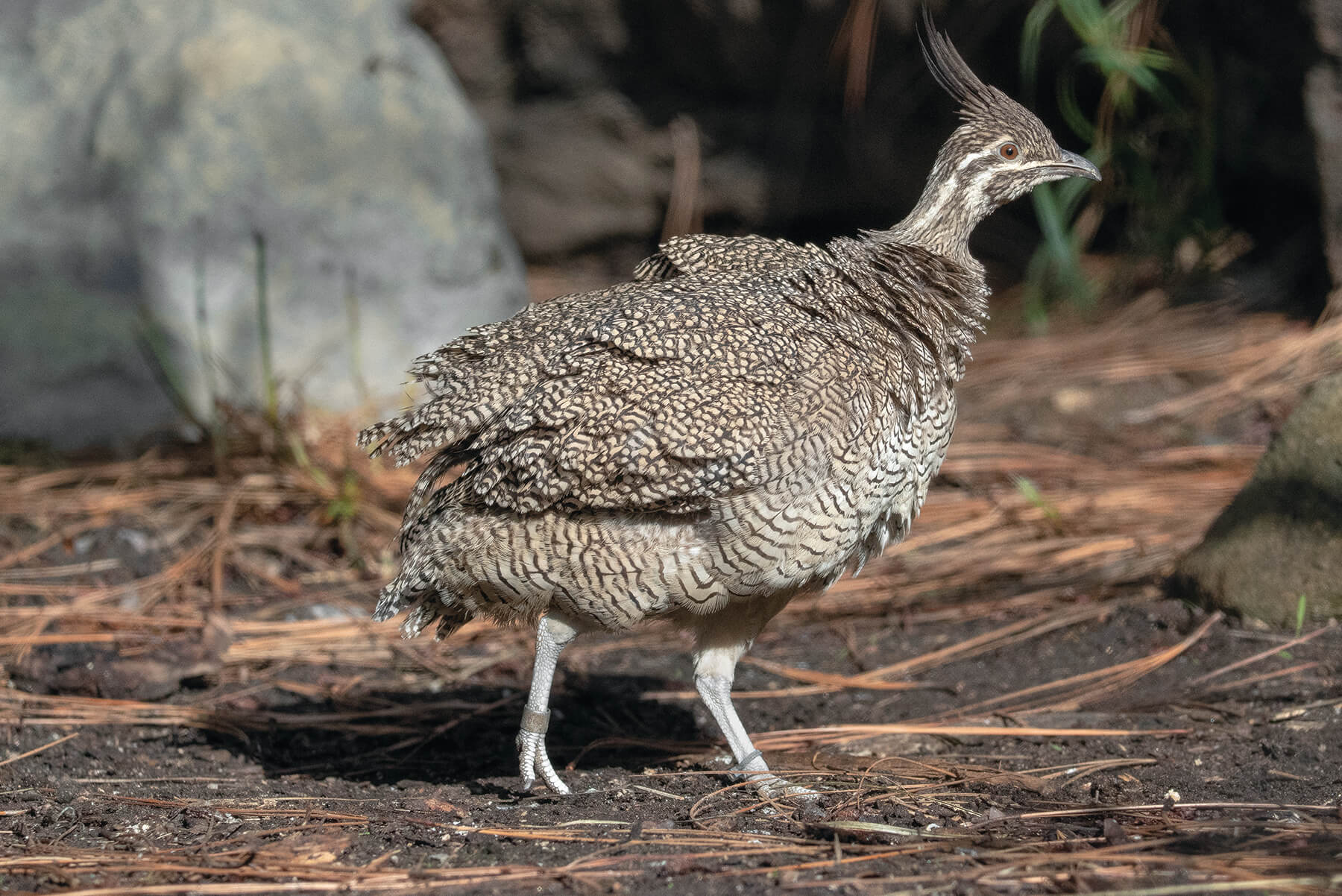
DOWN TO EARTH
Elegant crested tinamous are terrestrial birds and eat food from the ground, but they will also put forth the effort to jump up to take leaves, flowers, and fruit from foliage.
Easter Egg Birds
Also inhabiting Condor Ridge is a breeding pair of elegant crested tinamous Eudromia elegans, native to Argentina and Uruguay. With plumage of brownish gray, they’re well camouflaged for life on the ground. Their eggs, however, are a different story. Grass-green and gleaming like glazed porcelain, their eggs are among the most unusual and beautiful in the bird world. The eggs of other tinamous are just as polished looking, ranging in color from overripe-avocado to chocolate. Tinamous are sometimes called “Easter egg birds” because of their unique eggs.
The pair at Condor Ridge have a strong history of parenthood, having produced nine chicks over the years, and that’s important. “This species’ numbers in AZA facilities began to drop,” says Andrew. “The SSP made recommendations, and our pair was among those chosen to help boost the population.”
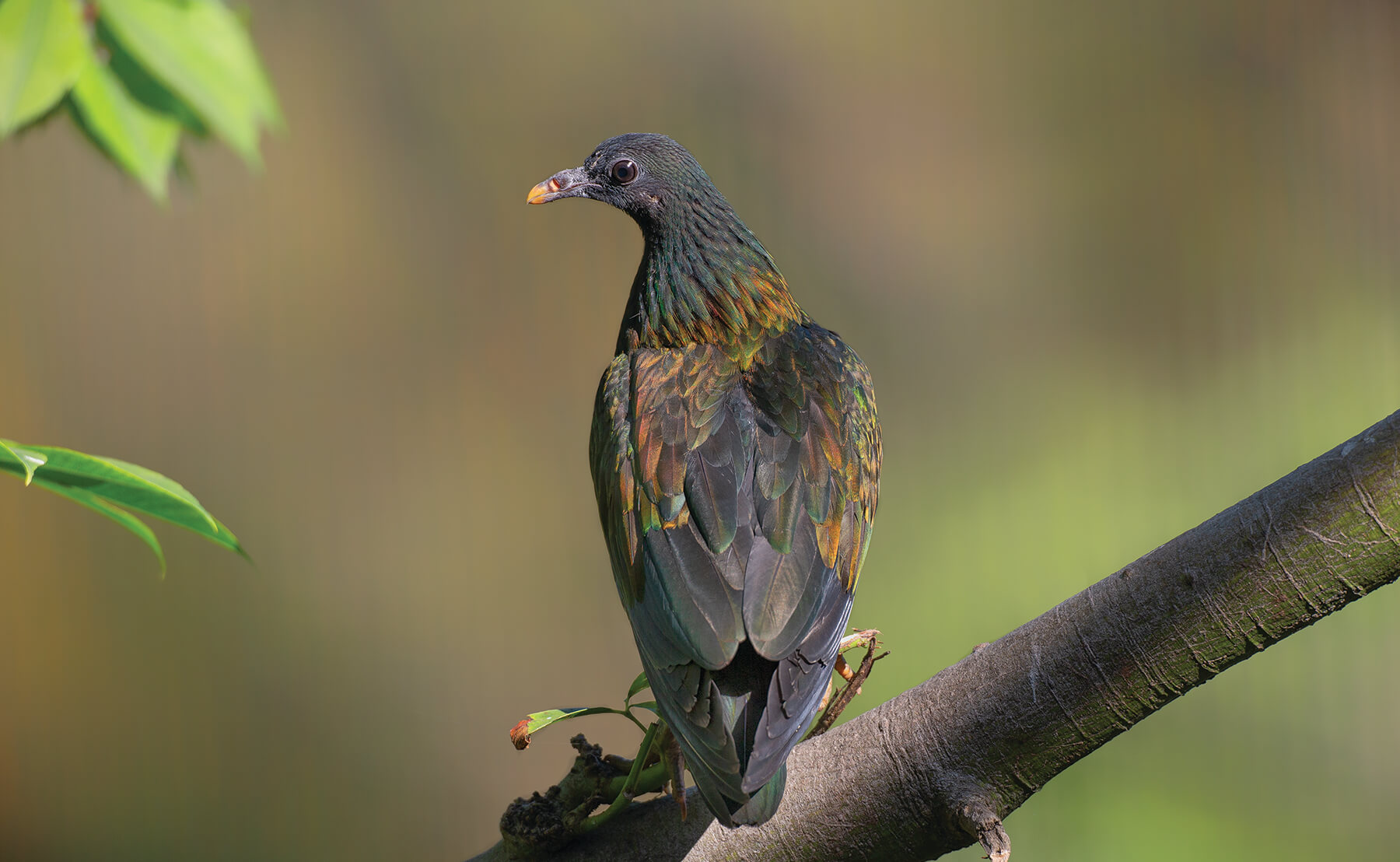
THE MORE THE MERRIER
Nicobar pigeons travel in large flocks of up to 85 birds.
 The Bali myna is the only endemic vertebrate on the island of Bali.
The Bali myna is the only endemic vertebrate on the island of Bali.
Prized Pigeon
Of the approximately 300 species of pigeons in the world, only a few are distinct enough to be considered unusual—and the Nicobar pigeon Caloenas nicobarica qualifies. Viewed in its preferred habitat, the dim understory of a tropical forest, it comes across as a dark and unobtrusive bird, about 14 inches long. Catch a glimpse of it in a beam of sunlight, however, and iridescent hues of purple, orange, and green shimmer and flash. You can see for yourself in the Park’s Wings of the World aviary, where our Nicobars welcomed a new member last year. You may even be able to spot the youngster, although, as Andrew explains, “it won’t be as brightly colored as the parents.”
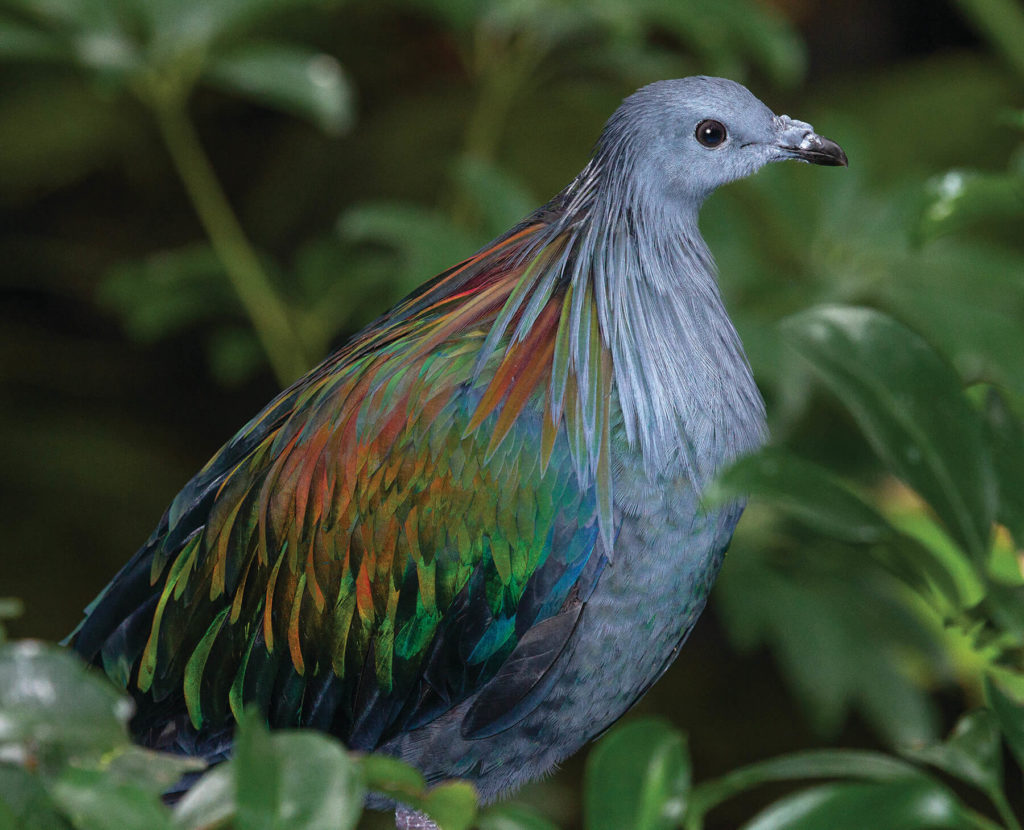
HIS AND HERS
The male and the female both have the same plumage but they can be distinguished easily: the male is larger and has a brown iris, while the female has a white iris.
Nicobar pigeons typically spend their time on the ground, feeding on seeds and insects. They make a classic pigeon-type nest, a jumble of loose sticks—but in their case, it’s about 10 to 30 feet up in a tree. The parents invest a great deal of time in incubating their single egg and raising their chick. The “apple of their eye” takes an unusually long time to fledge: about three months. Other pigeons of similar size fledge in four to five weeks.
As you watch the Nicobar pigeons, you’ll likely notice a couple of other striking characteristics—cape-like hackle feathers cascading from the neck, and surprising white tail feathers. Actually, the unexpected thing about the tail is that, unlike most other pigeons, it’s hard to see! The tail is so short that it is often completely hidden by the folded wings of the resting bird. No other species of pigeon appears to have so short a tail in relation to its body size.
On your next adventure to the Safari Park, keep an eye out for these feathered treasures.

